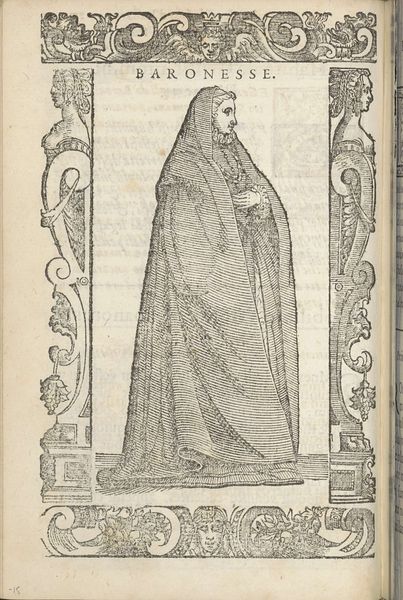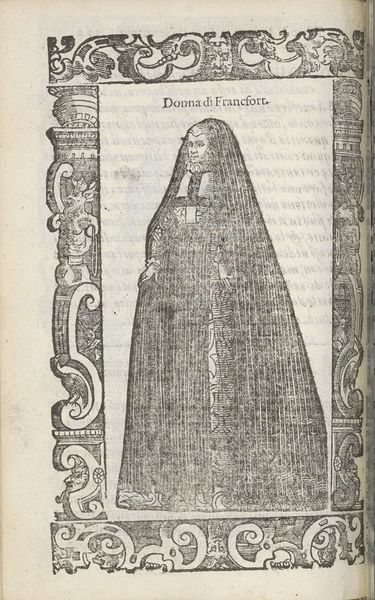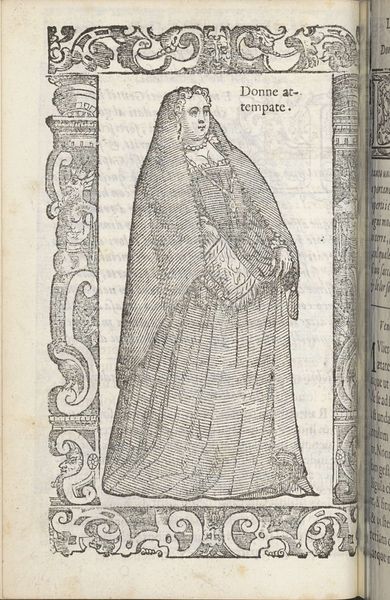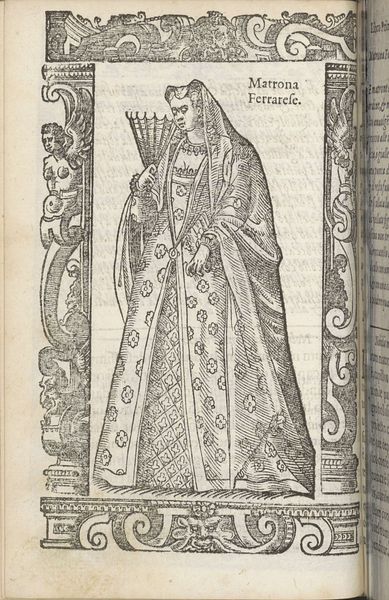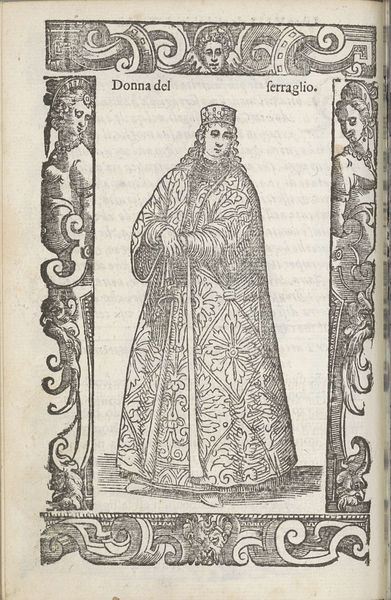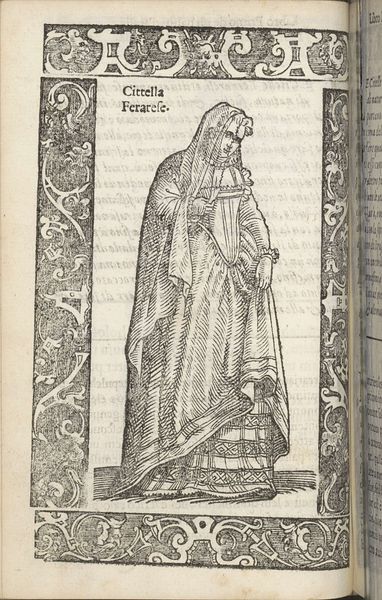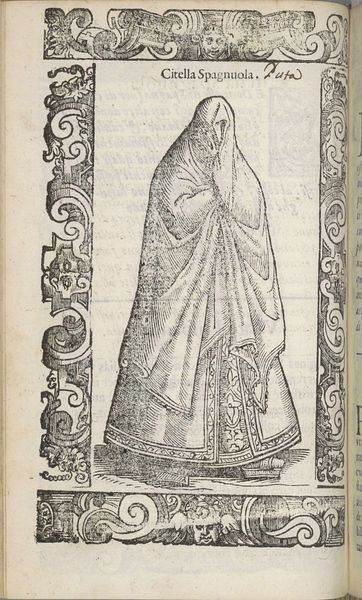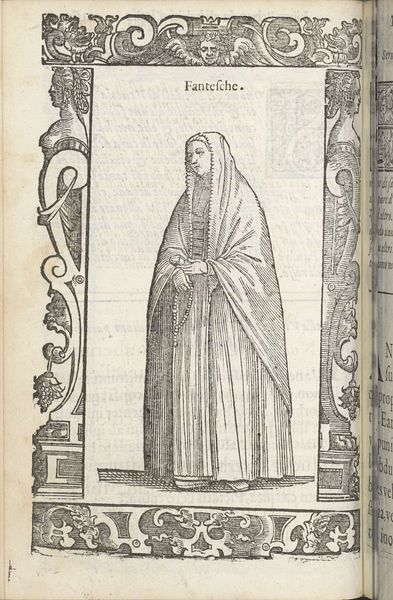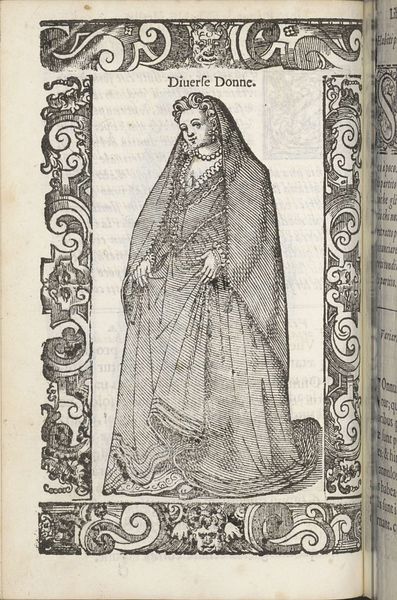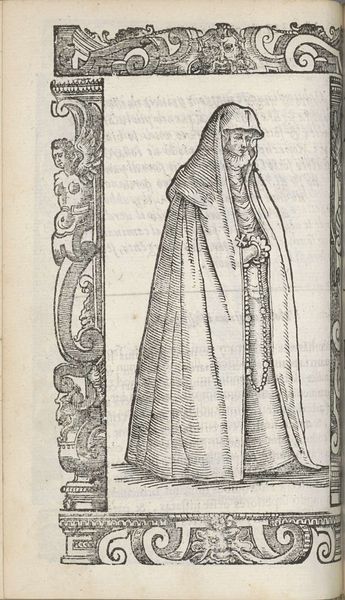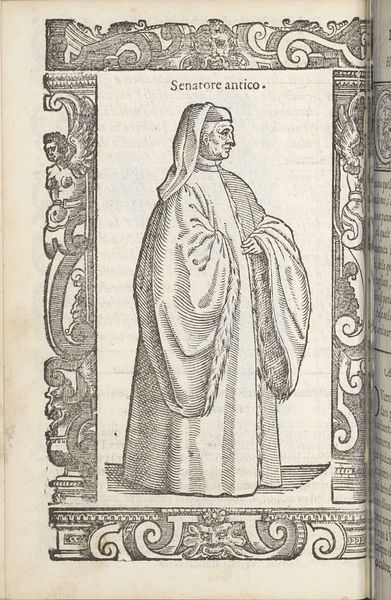
#
aged paper
#
pen sketch
#
old engraving style
#
sketch book
#
personal sketchbook
#
sketchwork
#
pen-ink sketch
#
pen work
#
sketchbook drawing
#
sketchbook art
#
dress
Dimensions: height 167 mm, width 125 mm
Copyright: Rijks Museum: Open Domain
This woodcut depicts an unmarried noblewoman from Venice. Her face is completely veiled. This act of concealment can be traced back through centuries, linked to rituals of modesty, mourning, and religious devotion across numerous cultures. Consider the veiled figures in ancient Roman funerary art, or the medieval depictions of nuns; this motif extends beyond the purely religious. The veil also served as a marker of status, delineating social boundaries and signalling respectability. This woman’s heavy veil speaks volumes about the constraints placed upon women, particularly those of noble birth, in Venetian society. The act of veiling the face carries profound psychological weight. In psychoanalytic terms, the covered face becomes a projection screen onto which viewers cast their own desires, anxieties, and cultural assumptions. The image of the veiled woman is not static. As it reappears across time, it continues to provoke curiosity, mystery, and a deep engagement with questions of identity and representation. This seemingly simple motif transcends its immediate context, tapping into the deeper currents of human experience.
Comments
No comments
Be the first to comment and join the conversation on the ultimate creative platform.

